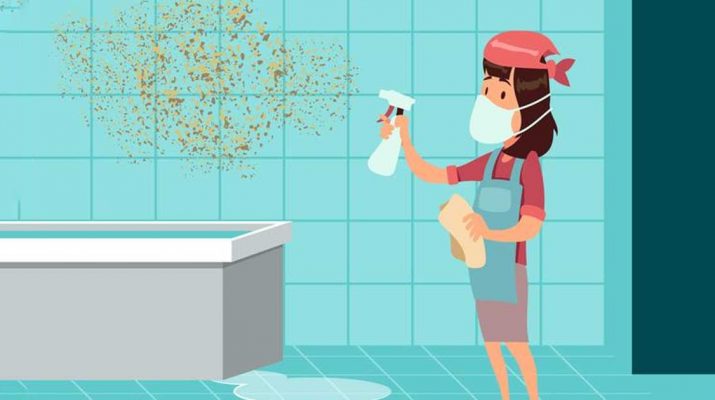Molds are different types of fungi. They grow in various types of objects, walls, food, and can reproduce by forming spores that travel through the air. Also, the mold can grow outdoors and indoors and can thrive in warm, humid, and damp environments.
Moreover, basements and bathrooms are the most typical areas where mold can grow. They are the moistest areas in the home. However, carpets, furniture, drywall, roofing, wallpaper, under the sink, are also areas where mold usually appears.
In fact, outdoor mold spores can enter the home as well. Through the air, these spores can attach to shoes, pets, clothing, etc. Why is this important? Even though some molds may not bother you, they can emit a musty odor.
Also, they can be exceptionally harmful to your health. Here is everything you need to know about mold exposure.
Symptoms of Mold Exposure
Have you ever wondered how you could know if you have been exposed to too much mold? Here are the most common symptoms that can answer your question.
- Abdominal pain,
- diarrhea,
- bloating
- Appetite swings,
- body temperature regulation
- increased thirst
- Difficulty concentrating
- Weakness and fatigue
- Headache,
- Sensitivity to light
- increased urination
- Morning stiffness,
- joint pain
- Poor memory,
- Red eyes,
- sweats,
- sharp pains
- sinus congestion
- chronic cough
- Static shocks
- metallic taste in the mouth
- disorientation
- Unusual skin sensations
- Vertigo
- mood swings
- Shortness of breath
- blurred vision
Symptoms of Mold Sensitivity
It is important to know if you are sensitive to mold. Here is how you can recognize the symptoms of mold sensitivity.
- Musty odors bother you
- Unusual shortness of breath
- Constant respiratory problems like coughing and infections
- Feeling ill very frequently
- Often headaches
- Unusual skin rash
What Can You Do?
There are many types of research and conversations around the mold that are still ongoing. The media starts to cover more about the dangers mold can have on our health. However, more studies are still necessary. That is why it is best to be informed.
In addition, you can respond well to this problem and get rid of it before it can affect your health. So, the best way to deal with it is to remove it completely. Also, it is important to let more people know about this problem and raise awareness.
Preventive Measures
If you believe you have been exposed to too much mold, make sure to contact a well-trained doctor in the Shoemaker protocol, or someone who knows about mold illness. Since you will have to go through a detoxification process, it is important to have a professional to guide you through it.
Also, make sure you stay away from any foods that are expired and contained yeast. Expired yeast is the perfect place for the fungi to thrive. Plus, sugars and carbohydrates are a breeding ground for mold spores.
Therefore, it is important always to watch the production dates and make sure not to consume expired products.
How to Test for Mold Exposure
There is a way you can test the mold exposure in your rooms. The most popular test is Environmental Relative Moldiness Index or ERMI. The EPA developed this test. To properly measure it, take a few samples from wherever you like.
In addition, you can test the space before you try to remove the mold yourself. Also, have in mind that disturbing the spores of the mold can make the situation worse. So, make sure to contact a professional mold removal expert.
If the tests are positive, a professional can help you locate the main source of the mold and find the location where there is too much humidity. Moreover, you will have to repair the pipes, leaks, or any area that causes the mold spores to build up.
This is an important step you should take before you decide on moving in a new apartment or renovating your current one.
Don’t forget to tell us your opinions in the COMMENTS and SHARE this post with family and friends.

